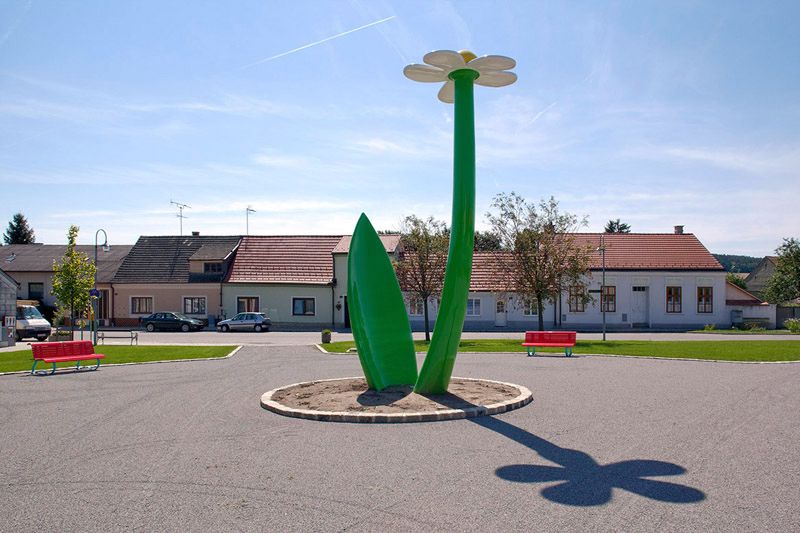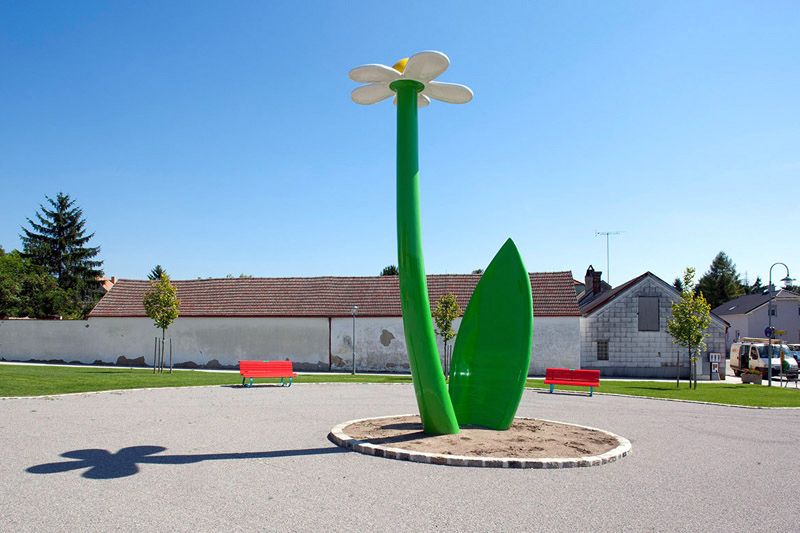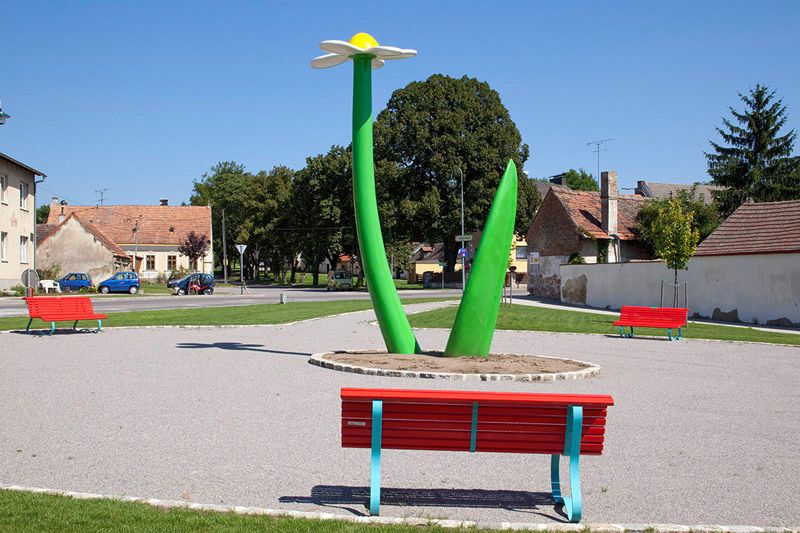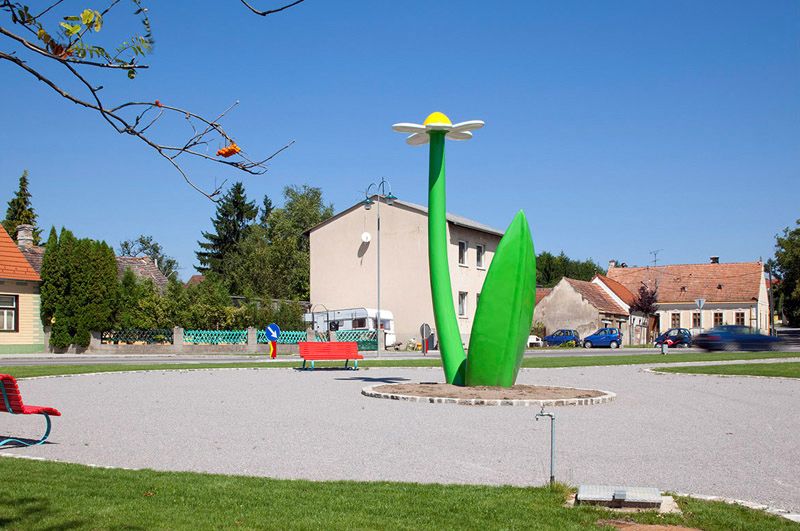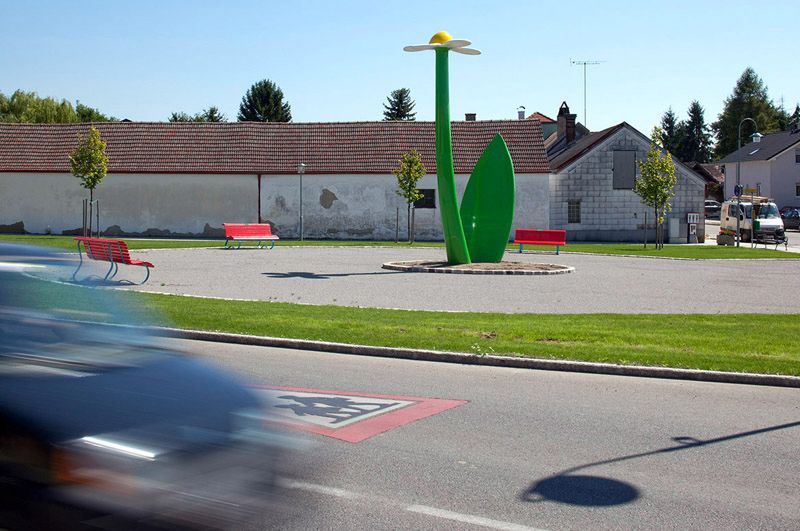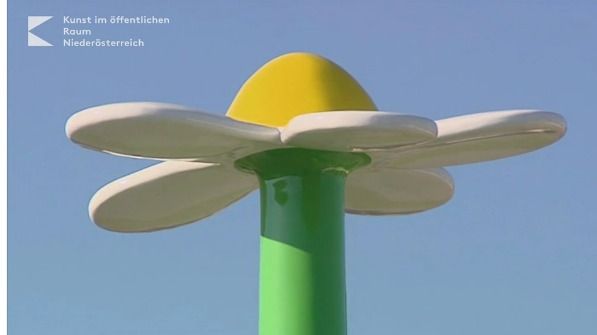Thomas Stimm
:
Public Square Design in Hüttendorf Near Mistelbach
Back
Information
Since the 1980s the flower has been a central motif in the sculptural work of Thomas Stimm. For the small square on the road in Hüttendorf he has erected a large-scale stylised marguerite. Shiny coloured surfaces and a strongly abstracted shape emphasise the sculpture's symbolic value.
The manifold points of contact between flowers and art can primarily be engaged with in painting. A prime example of this is the Dutch still life of the 17th century, considered more of a minor genre but still one that discusses some of the fundamental issues of painting. As far as sculpture is concerned, in the 19th century a scientifically motivated interest developed where the flower was examined as a model and represented in three-dimensional figures made of papier maché — for which the firm Brendel of Breslau was famous. Complete with hinges and unfolding elements, the individual flowers could be enjoyed as functional objects. In their deconstructivist approach these models appear to be the precursors to the monumental postmodern flowers that have dominated the work of Thomas Stimm since the 1980s. Stimm has had a large-scale stylised marguerite applied to the road for the small public square in Hüttendorf. As an old Persian saying has it, flowers do not have a front or a back. So they are ideally suited to a location where they can be seen from the centre as well as from all sides. Shining surfaces and a strongly abstract shape emphasise that it is a symbol where everything natural has culminated in an artificial creation.
(Susanne Neuburger)
Images (6)
